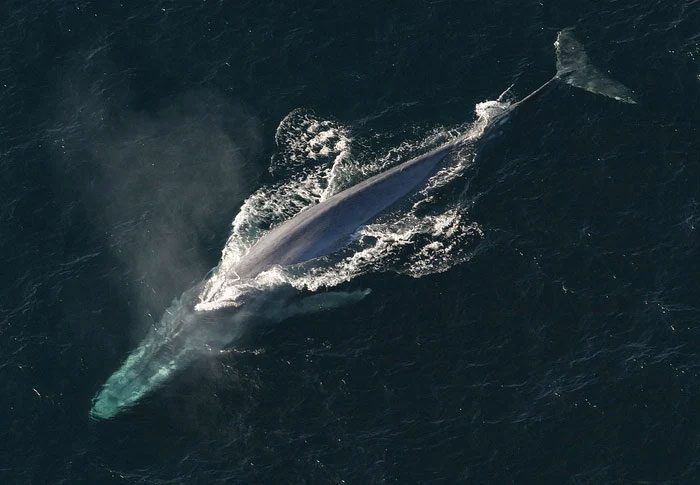There are many rumors that the largest animal on our planet – the blue whale – has a heart the size of a car; however, this may not be entirely accurate.
In 2015, scientists dissected a stranded blue whale in Canada. From this, the scientific community discovered that many of our previous understandings of the internal organ sizes of blue whales were incorrect. This misunderstanding could arise from our limited opportunities to measure the actual size and weight of blue whale organs.
A common belief is that the heart of a blue whale is the size of a car (often compared to a Volkswagen Beetle) and weighs half a ton. However, its actual size is more comparable to that of a toy electric car found in a children’s playground. The heart of a blue whale weighs about as much as a medium-sized motorcycle – around 180 kg.

The blue whale (Balaenoptera musculus) is the largest animal ever to exist on Earth. The largest blue whales can reach lengths of up to 34 meters, and their skulls make up nearly a quarter of their body. Blue whales belong to the Balaenopteridae family, which includes humpback whales, fin whales, Bryde’s whales, sei whales, and minke whales. Balaenopteridae is believed to have diverged from other families within the Mysticeti suborder around the middle of the Oligocene epoch (28 million years ago).
Since then, scientists have reconstructed the heart of the blue whale and created a replica that is currently displayed at the Royal Ontario Museum, standing 1.5 meters tall – making it the largest heart known to date.
Another famous idea is that the blue whale has blood vessels so large that an adult human could swim through them. However, this is also misleading, as the largest blood vessel (the aorta) of a blue whale is only about the diameter of an adult human head.
Nonetheless, there are many aspects of the blue whale that are truly astonishing; for instance, the mouth of an adult blue whale can hold 90 tons of seawater, and its tongue alone weighs 2.7 tons, which is heavier than three Volkswagen Beetles.

The blue whale is the largest known animal in the history of Earth. One of the largest dinosaurs from the Mesozoic Era, Argentinosaurus, weighed only 90 tons, which is comparable to an average blue whale.
The sounds produced by blue whales are also incredibly loud (up to 190 decibels, while the noise from a jet engine is around 140 decibels). Although humans cannot hear the sounds made by blue whales with their ears since these noises are below the range of human hearing, they can travel hundreds of kilometers through the ocean floor.
However, contrary to many expectations, the sounds of blue whales rank only second in the animal kingdom. The top spot belongs to a small species of pistol shrimp in the family Alpheidae, which can produce sounds reaching 200 decibels.

Pistol shrimp were first discovered during a taxonomic study of a species of shrimp from Japan and the Gulf of Thailand.
You would think that as the largest animal on Earth, blue whales would be predators that eat other large animals. However, in reality, the throat of a blue whale is only about 23 cm in diameter. The primary diet of blue whales consists of mollusks (shrimp-like crustaceans averaging 5 cm in length) and sometimes small zooplankton (most measuring only 1 to 2 mm).
Blue whales use a lunging technique to hunt. After diving to a certain depth, they turn back and accelerate to lunge upward, swallowing a large quantity of mollusks above them, then using their baleen plates to filter seawater and food.
A blue whale can consume 2 million kg of food (equivalent to 500,000 calories) in one go. At certain times of the year, blue whales may consume nearly 4 tons of food each day. This lunging hunting method can be considered “the largest biological event on Earth.” Although blue whales eat a massive amount of food during the summer, they eat almost nothing when migrating to warmer waters in the winter.
Blue whales typically dive down to 100 meters to forage during the day, while at night, this activity primarily occurs near the water’s surface. Generally, they can hunt continuously without needing to surface for air for up to 10 minutes, although there are recorded instances of continuous dives lasting up to 21 minutes.

Blue whales have a large, elongated, and streamlined body that enables them to glide through water effortlessly. They have a smooth gray-blue skin with a lighter underside, accompanied by a series of pleats on their neck that can expand up to four times when they eat.


















































